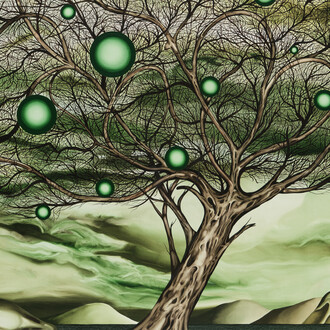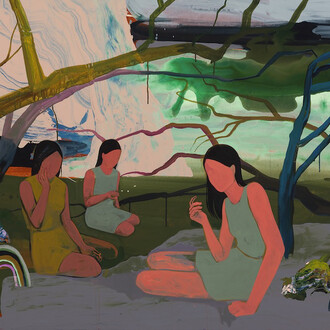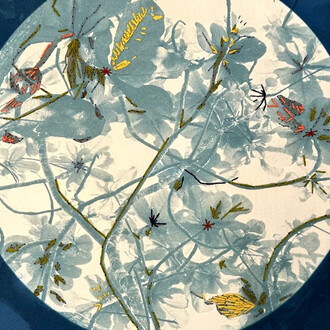Farah Atassi, Genesis Belanger, Elizabeth Glaessner, Whit Harris, Clementine Keith-Roach, Klara Kristalova, Jasmine Little, Sharon Madanes, Kemi Onabule, Cammie Staros, Jessica Stoller and Hana Ward Mrs. is delighted to present Body of Work, an exhibition focusing on the exploration of the body through painting and clay works, seen through the lens of female creators. This presentation addresses themes related to the first and "fallen" woman, the artist's medium as a life-shaping substance, and contemporary issues of bodily autonomy and human rights.
This exhibition vividly captures the complexity of the human experience with depth, playfulness, and, above all, power. While the show engages with a variety of concepts, its core focus is a critical examination of creator versus creation, observer versus the observed, and the body in abstraction as a dynamic, ever-evolving entity.
The biblical story of Adam and Eve illustrates the original tension between creation and control. Woman is depicted as being crafted from Man's excess, a mere appendage despite her life-giving abilities. When female artists work with clay, a material used in this divine creation, they engage in a reclamation, molding the world to their own vision. Clay, a simple mixture of earthy minerals, undergoes a transformation through fire and coating, becoming something entirely new and complex—a form of rebirth. This creative act parallels a radical, godlike gesture. Similarly, thick brushstrokes of oil paint breathe life, meaning, and vibrancy into what was once lifeless and inanimate, endlessly regenerating until the artist decides otherwise.
Artemisia Gentileschi's seminal work, Judith Slaying Holofernes, portrays the assassination of Assyrian general Holofernes by his lover Judith, an Israelite. Historians note that Gentileschi included a likeness of herself in this powerful painting as a form of "visual revenge" against her rapist and former mentor, Agostino Tassi. This work stands out for its rare display of female rage and authority. As one of the few female artists recognized as an Old master, Gentileschi remains among the limited number of female painters celebrated by prestigious institutions. Over 400 years later, 87% of artists in the permanent collections of the 18 largest U.S. museums are still men.
Later in the creation narrative, Eve’s act of tempting Man with the fruit of knowledge leads to their mutual downfall. Yet, this act can be seen not as folly but as a call for greater freedom of both body and mind, a desire for self-determination. This portrayal reflects the insidious nature of patriarchy, which frames "the first Woman" as a half-formed being, a product of Man's cast-offs, and the originator of sin. In this light, what does it mean for a woman to shape raw materials, claiming physical and artistic space not only in galleries but in the broader world, especially in traditionally male-dominated fields?
This timely exhibition, will focus on figuration in clay and painting, but also speak to this larger political moment. One in which women's reproductive rights and autonomy are imperiled. In which female artists continue to receive less recognition and monetary compensation than their male counterparts. In which the struggle for who, and under what circumstances, someone can be a creator continues to be a topic of public debate. Of who is the molder and who must be the molded.
(Text by Laura Feinstein)
















